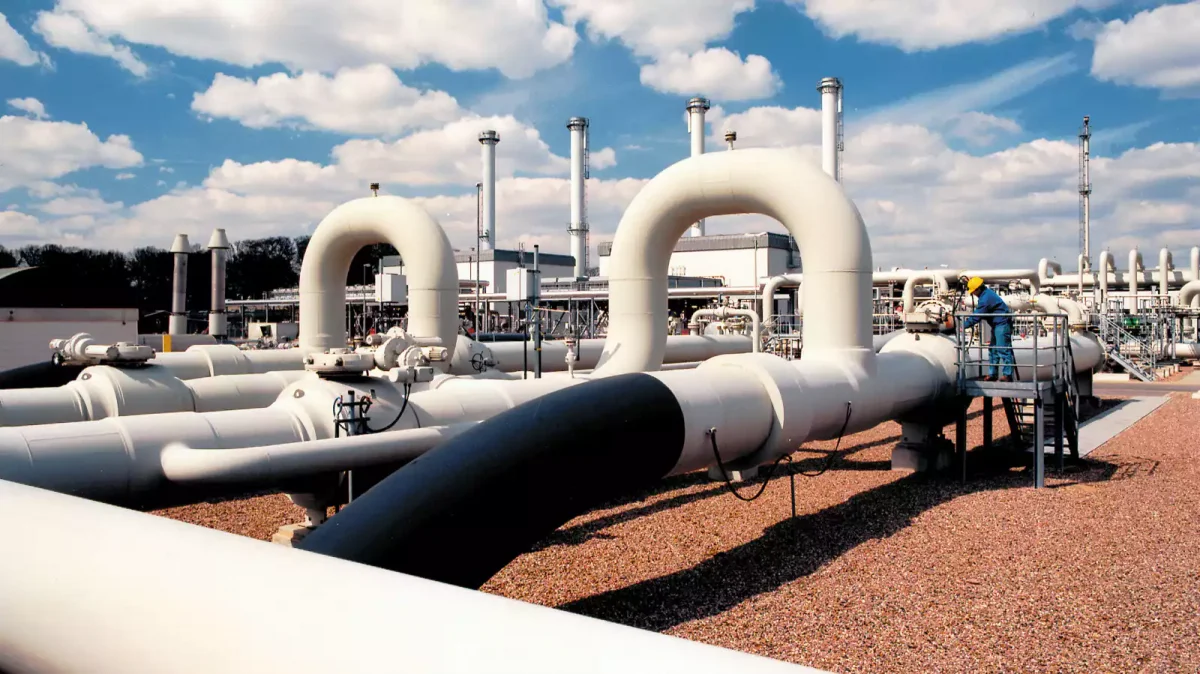Germany is entering the winter of 2025/26 with a much more relaxed gas supply than in previous years. According to the Federal Network Agency, gas storage facilities were around 76% full on Tuesday, 7 October. At this point last year, they were 96 percent full. And even looking back over several years, it has been a long time since gas reserves have been this low. This time, Germany is also far behind the EU average (83 percent). The last time Germany held so little gas at this time was in October 2021 – shortly before the Russian attack on Ukraine. This development was already apparent in the summer.
Experts are nevertheless relaxed about this development. “I don’t think storage levels of 70 to 80 percent at the beginning of October are worrying for now,” says Prof. Dr Franziska Holz from the German Institute for Economic Research (DIW), according to a press release from the Science Media Center (SMC). Germany can also meet a large part of its demand in winter from imports from various sources. “In terms of imports, particularly from Norway and in the form of liquefied natural gas (LNG), I cannot foresee any restrictions that would jeopardize the supply of natural gas in the coming months,” said Holz.
How long the storage facilities will last
Prof. Dr Jochen Linßen from the Jülich Research Centre also confirms: “The gas supply situation in Europe and Germany can currently be regarded as stable despite lower storage levels in Germany.” The four LNG terminals enable a stable supply of 350 to 450 gigawatt hours per day, supplemented by high pipeline imports from Norway, the Netherlands and Belgium.
With the current storage level of 191 terawatt hours, Germany could be supplied for more than a whole month from the storage facilities alone. With capacities of over 25 per cent of annual consumption, German storage facilities are among the largest in Europe.
Why less gas was stored
The reason for the restraint throughout the summer is probably the purchase prices. These would not have differed so much between summer and winter. “In 2025, day-ahead gas prices remained stable throughout the year at between 45 Euro per megawatt hour and around 35 Euro per MWh,” explains Linßen. “We are currently trying to strike a balance between economic filling and security of supply.”
According to regulations, German gas storage facilities must have certain fill levels on 1 October and 1 February. Slow-fill storage facilities, such as Germany’s largest storage facility in Rheden, must be 45 percent full, while fast-fill facilities must be 80 percent full. We are currently not far away from this.
Even if the researchers do not consider the situation to be critical in principle, they point out that the supply situation can quickly deteriorate, especially in winter. All it would take is a freezing winter and a revitalized economy. A deterioration in the security situation in countries that export LNG could also quickly become a problem.
(mki)
Don’t miss any news – follow us on
Facebook,
LinkedIn or
Mastodon.
This article was originally published in
It was translated with technical assistance and editorially reviewed before publication.
Dieser Link ist leider nicht mehr gültig.
Links zu verschenkten Artikeln werden ungültig,
wenn diese älter als 7 Tage sind oder zu oft aufgerufen wurden.
Sie benötigen ein heise+ Paket, um diesen Artikel zu lesen. Jetzt eine Woche unverbindlich testen – ohne Verpflichtung!
